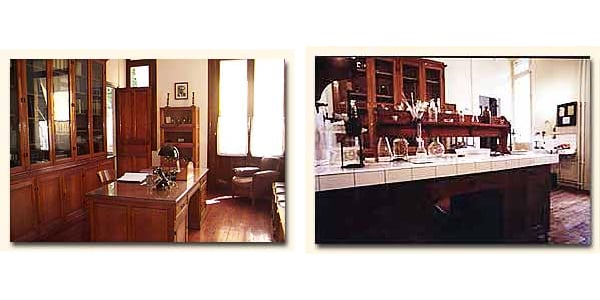Marie Curie: Dual Nobel Prize Recipient
Marie Curie received Nobel Prizes in physics and chemistry before being director of her research lab at the University of Paris. Her radioactivity research profoundly impacted the advancement of medical and nuclear technologies.
Polish-born physicist and chemist Marie Curie made numerous contributions to science and technology, profoundly impacting society and paving the way for future scientists and researchers.
Curie is notable as the first woman to be awarded a Nobel Prize and the only person ever to receive two Nobel Prizes in two different fields.

Marie Curie. Image used courtesy of Atomic Archive
STEM Education
Born in 1867 in Warsaw, Poland, Curie lost her mother at a young age. Much of her education was overseen by her father, who introduced her to science. Curie was particularly interested in mathematics and physics and excelled in these subjects in school.
Curie was not admitted to universities in Russia or Poland because she was a woman. After several years working as a governess‒a home tutor for children‒she moved to Paris to study chemistry and physics at the Sorbonne, where she received her Licenciateships in Physics and the Mathematical Sciences, becoming the first woman to teach.
Research in Radioactivity
In Paris, she met her husband, Pierre Curie, a physics professor. Together, they conducted research in radioactivity, a term Curie herself coined.
Their research studied uranium ore pitchblende, which had superior radioactivity than the uranium extracted from it. The study of this phenomenon led to the discovery of two new elements, polonium‒named for her native country of Poland‒and radium‒named for its intense radioactive quality.
Curie’s work in radioactivity had a profound impact on society. She was the first person to prove that radioactivity was a property of atoms. Her work provided the foundation for the development of nuclear power and nuclear medicine. In 1903, she and her husband received a Nobel Prize in Physics for their radioactivity work.
Curie received her second Nobel Prize in chemistry in 1911 for discovering radium and polonium.
Educator, Innovator, Leader
After her husband died in a car accident in 1906, Curie took over his position as Professor of General Physics at the Sorbonne. She was the first woman to hold this position.
In 1909, the University of Paris and the Pasteur Institute partnered to build Curie a modern research lab. Curie was appointed Director of the Curie Laboratory within the Radium Institute, officially opening in 1914. With the scientists employed in the lab, she published 483 works, including papers and books she personally wrote.

Marie Curie’s chemical laboratory, maintained at the Radium Institute. Image used courtesy of the American Institute of Physics
With Dr. Claudius Regaud, Curie established the Curie Foundation in 1920, which quickly became known for its work in radiation therapy as a treatment for cancer. In 1922, she became a member of the Academy of Medicine; her work was dedicated to researching the medical applications of radioactive substances.
On a trip around the U.S. in the 1920s, Curie spoke at many women’s universities and colleges.
As a woman in STEM, Curie was also a strong advocate for equal pay for women and for women’s access to education and careers in science. Throughout her life, she encouraged young women to pursue careers in science and technology, including her daughter, Iréne, who worked as Curie’s lab assistant.
Curie’s work has inspired countless scientists and researchers to continue to explore the mysteries of the natural world. Her research into radioactivity has profoundly impacted medicine, as it has led to the development of many new diagnostic and therapeutic technologies, including radiation therapy for cancer and diagnostic imaging techniques like X-rays and CT scans. Her work has also been crucial in developing nuclear power, which has provided a significant energy source for the world.
Element 96 was named curium (Cm) after Madame Marie Curie and her husband.

Curium. Image used courtesy of Adobe Stock






